Most of us are aware of the significance of drinking enough water. Distilled water is one of the best ways to purify your water. It is known to keep us hydrated, help with weight loss, give us healthier skin, and boost our immunity.
There are many other ways to purify the water you drink to avoid any impurities. WaterRev.com helps you to get distilled water on demand.
The idea behind distilled water is to remove any minerals or chemicals from your water. You do this by boiling your water and collecting it in a container. The container needs to be made of glass or plastic. Metal will leech out any extra minerals it contains.
What Is Distilled Water?
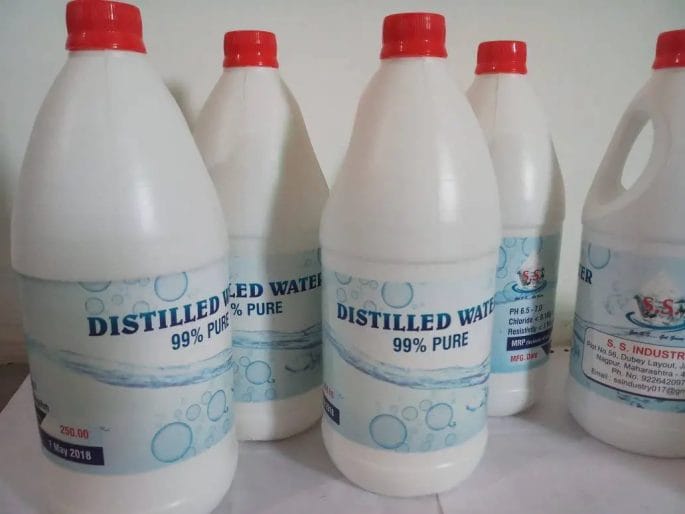
Distilled water is water clean from all forms of organic and inorganic impurities, like viruses, bacteria, salt, minerals, and more. It is a more specialized form of water purification, but cheaper and easier to process from home.
So, is boiling water the same as distilled water? No, They are very different. The process of distilling water is straightforward. Boil your water until it vaporizes, and collect when the vapor turns to liquid. Distilled water contains no mineral.
How Do You Make Distilled Water?
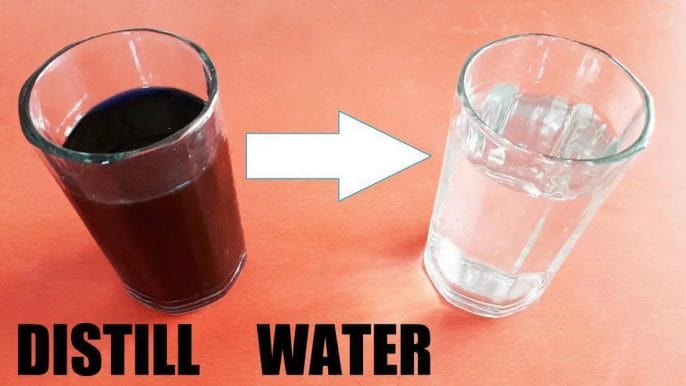
There are two types of distillation methods used today. One method uses heat while another does not use heat at all. In both cases, there are several steps involved before the final product can be obtained.
During the first type of distillation, you must boil the water until most of its volume has evaporated. This means that only half of the original amount remains after the initial heating. As the remaining liquid evaporates, it must be condensed back down to its original size using a cooling system.
In contrast, the second kind of distillation doesn’t need any external energy source. Instead, it relies solely upon the natural properties of the material being boiled. For example, when salt is heated, it releases moisture which condenses around itself. Salt will continue to remove moisture as long as the temperature stays high enough.
Consider buying bottled water instead of tap water if you want access to the best water available.
Distilling Methods
There are two main methods used to produce distilled water. The first method uses boiling while the other utilizes solar power. Both methods use different materials, but both result in pure water.
Boiled Method
The simplest way to create distilled water is to place a glass jar containing water inside another large vessel called a retort. A retort is just a large metal box with holes drilled throughout its walls. These holes provide channels for gases to escape from the retort. It reduces heat retention in the retort. You should place a rubber stopper at the bottom of the inner chamber to seal it off. This prevents any from entering the inner chamber once the outer chamber is closed.
The next step requires filling the inner chamber with water. The rubber stopper is removed, and a piece of cloth is placed over the hole at the base of the inner chamber. This cover traps vapors as they leave the inner chamber. As soon as the vapor pressure builds up inside the inner chamber, the temperature rises. The water molecules break apart and then release their electrons. These combine with hydrogen atoms to form H2O.
After several hours, the water in the inner chamber has been purified. Repeat steps 1 – 4 using new water.
Solar Power Method
It is much better than the previous method since it does not require external energy. Instead, sunlight generates the necessary energy needed to convert water into pure water. First, place a small amount of salt in a plastic baggie and some baking soda. Next, seal the bag tightly so no moisture can enter. Then, put the bag in direct sunlight until the mixture begins to bubble. Once this occurs, remove the bag and pour the liquid into a bowl. Allow the solution to sit overnight.
Strain the solution through a cheesecloth to filter out any remaining solids. Repeat these steps until the desired level of purity is achieved.
Step 1: Filling Pot and Heating
Your first step is to fill the container with water. Fill the container to about 1/2 inch from the top of the lid. Then add any additional items like ice cubes or a filter (see below). Do not fill it any higher than halfway. If you do, you will have a hard time boiling the water, and it may crack or break during the boiling process.
Put on your eye dropper and carefully pour about 2 to 3 drops of distilled water into the container. Measuring out the water with a measuring cup is much easier. Use an eyedropper to add 1/8 of an ounce (about 2 – 3 drops) of distilled water into the container.
Note: Using an eyedropper is easier than measuring out 1/8 of an ounce with a measuring cup. Also, if you accidentally pour too much water into your container (which is very easy to do),
- Fill the pot with cold water.
- Add 3/4 cup of table salt.
- Bring water to boil
- Turn heat down to low.
- Cover pot
- Wait 20 min
- Remove lid
- Let stand 5 more min.
- Strain & Bottle
You should now have very good quality distilled water!
Step 2: Receiver Flask and Lid
Next, put on your receiver flask and lid. You will need to place the top of the funnel into the opening for the water to flow out of it when you heat it. Filters remove impurities from distilled water that you don’t want to be in it. To clean the funnel, use a paper towel or cloth if you cannot find a reusable one.
- Place receiver flask under the hot running faucet
- When water runs clear, turn off the faucet.
- Pour distilled water into a bottle.
- The lid on top of the bottle
- Store in the refrigerator.
Note: When storing bottled water, store upright. Store upside down, and the cap will leak.
Distilled water is safe to consume
Step 3: Heat the container To heat your distilled water, put it in a pot of boiling water. A pot ensures that the contents of your container are completely submerged under the hot water. It also prevents any of the water from boiling over. Note: If you are using a smaller container, it’s best to heat it in two separate pots of hot water. This way, you can use one pot for the first half of your distilled water. Then you can use a different pot to heat the second half of the water. You can use two pots if you have a large container that needs to be heated in two separate portions.
Step 4: Boiling and Filtering
Place the receiver flask into your pot of boiling water. It’s important that you don’t fill it more than halfway full, or else you won’t be able to get the water to boil properly. Heat your distilled water until it reaches a rolling boil (about 1 – 2 minutes). When it reaches a rolling boil, you will need to remove the receiver flask from the pot of boiling water. You can use tongs or any other method that works for you.
After removing the receiver from the boiling water, carefully pour 2 – 3 drops of distilled water into the funnel. Be careful not to pour too much. This could result in an unpleasant mess.
After pouring 1/8 of an ounce (about 2 – 3 drops), pour the receiver into your boiling water. Avoid pouring too much, or else you’ll have a mess! Once the water has boiled, remove the receiver from the pot and pour out 1/8 of an ounce (about 2 – 3 drops) into the funnel.
Step 5: Ice
Fill your freezer with water and ice. When the temperature reaches 0°C, fill up to 2L of distilled water into the flask.
Step 6: Condensation Forming
When the water is cold enough, start to fill up your pot with distilled water. Put the pot into a refrigerator for 24 hours after you have filled it with distilled water.
Step 7: Removing and Storing
To remove the small amount of sediment from your distilled water, you can filter it through a coffee filter. Place the filtered water in an airtight container and refrigerate it for 24 hours. You should remove and store your distilled water in an airtight container. You should then place it back into your refrigerator or freezer for 24 hours.
Step 8: Bottles
Bottle distilled water by pouring directly into glass bottles. Plastic bottles tend to leach chemicals into the water. Glass bottles don’t absorb those chemicals. They look pretty.
Step 9: Refrigeration
Refrigerate distilled water immediately upon opening. Keeps freshness longer.
Step 10: Storage
Store distilled water in dark containers in the fridge. Don’t let light reach the water.
The above methods work well, but they take time and effort. I prefer to buy my own distilled water at Home Depot. The price isn’t bad either.
Distilled water is safe to use when making drinks like tea, coffee, etc.
Distilled water is recommended over filtered water since most filters remove bacteria without changing water’s chemical composition.
For example, chlorine added to municipal water supplies helps kill germs and other microorganisms.
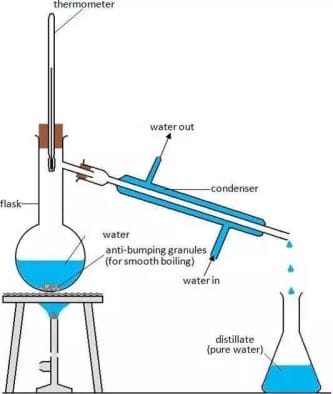 <img alt=”Distill Tap Water with Glass Bottles” data-id=”7997″ width=”533″ data-init-width=”533″ height=”631″ data-init-height=”631″ title=”Distill-Tap-Water-with-Glass-Bottles” loading=”lazy” src=”https://enqanksv6fg.exactdn.com/storage/2020/06/Distill-Tap-Water-with-Glass-Bottles-1.jpg?strip=all&lossy=1&ssl=1″ data-width=”533″ data-height=”631″ data-eio=”l”>
<img alt=”Distill Tap Water with Glass Bottles” data-id=”7997″ width=”533″ data-init-width=”533″ height=”631″ data-init-height=”631″ title=”Distill-Tap-Water-with-Glass-Bottles” loading=”lazy” src=”https://enqanksv6fg.exactdn.com/storage/2020/06/Distill-Tap-Water-with-Glass-Bottles-1.jpg?strip=all&lossy=1&ssl=1″ data-width=”533″ data-height=”631″ data-eio=”l”>
How to Store Distilled Water
You should never leave distilled water outside as sunlight destroys its properties. If you have to store it outdoors, cover it with plastic wrap so that no direct sun rays touch it.
When stored correctly, distilled water lasts indefinitely. However, if left exposed to extreme temperatures, it may lose some of its potency over time.
To ensure maximum shelf life, store distilled water in cool places away from direct sunlight. This includes refrigerators, freezers, and even under beds
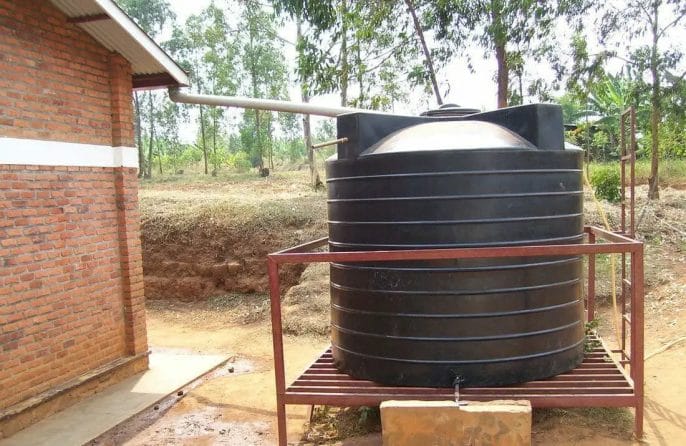
Making Distilled Water in a Bowl
Many people believe that if you add salt to the water, it becomes “distilled” water. This is true; however, this does need some extra steps. First, mix equal parts of table salt and baking soda to distill water using a bowl.
Then, combine these two ingredients with cold water in a large mixing bowl. Next, cover the top of the mixture with plastic wrap, so no oxygen gets inside.
Finally, set aside overnight. In the morning, check the mixture every hour until there is no more bubbling action going on. If the mixture stops bubbling after 12 hours, then congratulations! Your homemade distilled water is ready.
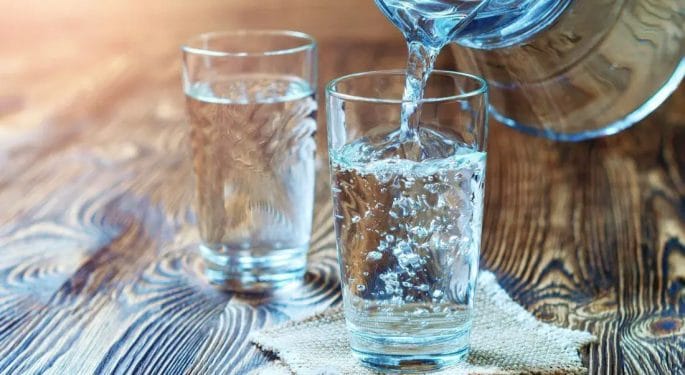
Difference Between Distilled Water and Purified Water?
There is no much difference between distilled and purified water. Distilled water involves collecting water over condensed vapor, leaving behind any mineral residue.
On the other hand, purified water goes through filtrations that remove bacteria, algae, fungi, and chemical pollutants. Purified contains minerals.
How to Make Distilled Water With A Soda Bottle
You can create your very own distilled water using nothing more than a regular old bottle of carbonated beverage. Follow these simple instructions:
- Fill the empty bottle about halfway full with plain bottled water.
- Add 1/4 cup vinegar to the filled bottle.
- Cap the bottle tightly and shake vigorously.
- Allow the bottle to sit undisturbed for 48 hours.
- Check the level of liquid remaining in the bottle periodically during this period.
Once the desired volume remains, pour off the clear liquid and discard the cloudy residue left behind. Use the purified water right away or refrigerate indefinitely.
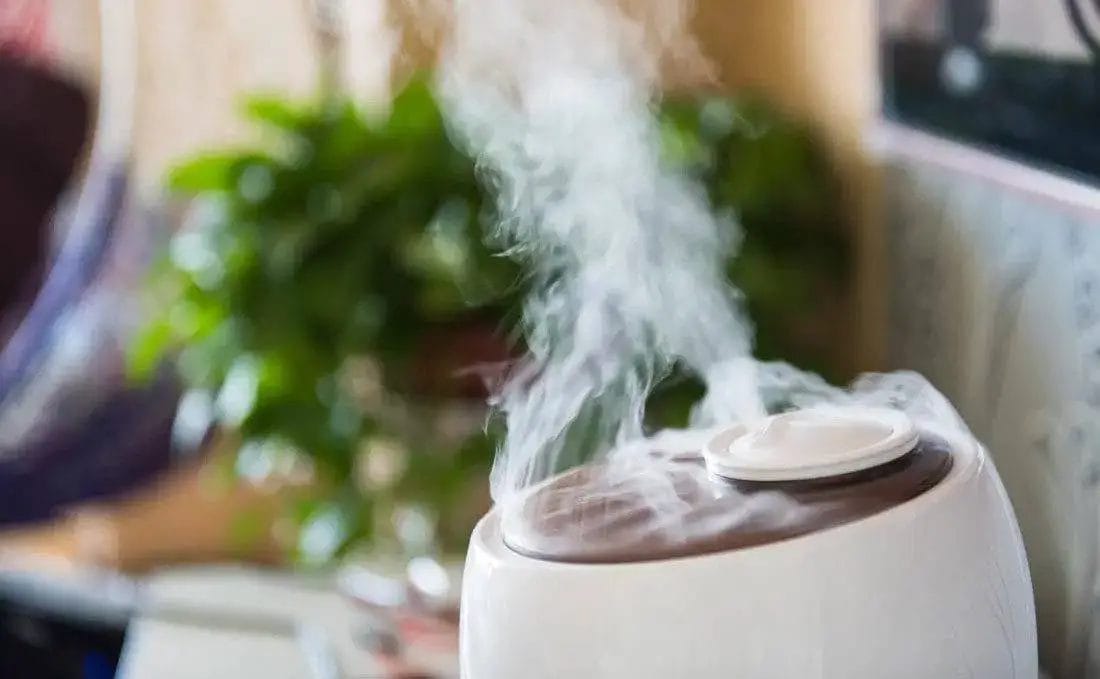
How to Make Distilled Water From Salt And Vinegar
This method requires a bit more preparation before starting but once completed; you’ll end up with pure distilled water.
First, fill a gallon jug halfway with warm water. Mix 2 cups of sea salt into the warm water. Stir thoroughly. Cover the mouth of the jar loosely with aluminum foil. Place the lid securely onto the jar.
Set the jar outside in direct sunlight for 3 days. On day three, open the jar and stir the contents. Pour out the salty brine from the bottom of the jar. Discard the salty brine. Rinse the glass jar with hot water. Dry completely.
Now, place the cleaned jar back under the Sun for another 24 hours. Afterward, rinse again with hot water. Repeat as needed until the water has become crystal clear.
How to Make Distilled Water Using Rain Water
You may want to collect rainwater if rainwater collection isn’t an option where you live. One way to do this would be by installing a small roof catchment system. Even without a tank setup, you should still be able to collect enough water to last several months.
Just remember to store the collected water properly. For instance, never let it freeze. Also, try not to expose it to air directly. Instead, use a sealed storage vessel like a bucket or other similar containers.
How Does the Distillation Process Work?
The basic idea behind distilling is pretty straightforward. When water boils molecules within it move around. Those molecules collide with one another and the resulting state is altered. Some of them will evaporate, while others will condense.
Condensed vapor forms clouds which eventually fall as precipitation. During the evaporation stage, only certain types of particles remain suspended in the water. These include gases and volatile organic compounds.
VOCs are chemicals found naturally in many substances. They include, for example, plants, animals, soil, and food products. Plastics, rubber, textiles, paints, adhesives, antiseptics, pesticides, cleaners, and adhesives are all used.
They’re often found in air pollution and global warming. They have been linked to asthma, respiratory disease, heart disease.
Why Buy a Pure Water Distiller?
The main reason why people buy a pure water distiller is that they don’t trust what comes out of their taps. Do you ever wonder how safe your local tap water is, you need to read this article. We’ve got some shocking facts about tap water that may surprise you!
Distilled Water Tastes Fantastic
One thing that makes distilled water so great is its taste. Most bottled waters contain additives that can alter the flavor of the beverage. This doesn’t happen when using purified water since there are no added flavors. In comparing distilled water to regular tap water, you’ll notice that distilled water tastes better than regular tap water.
Distilled Water for Coffee
Coffee drinkers love having freshly brewed coffee every morning. Unfortunately, most commercial brands of instant coffee come loaded with artificial ingredients. That means that you won’t enjoy the same quality of coffee when you consume these beverages. Fortunately, you can prepare delicious homemade coffee drinks using distilled water. All you need to do is add 1 cup of distilled water to 4 ounces of ground beans. Let it sit overnight. Then, strain the mixture through a cheesecloth.
Distilled Water for Humidifiers
Humidifiers play a vital role in keeping indoor environments comfortable. While humidifying systems work well, they usually require frequent maintenance. To save time and money, you can replace the filter regularly. But, before doing so, check whether the filters are made from cotton balls or paper. Paper filters absorb moisture more quickly than cotton ones. So, replacing them too frequently can cause mold growth inside the unit. On the other hand, cotton filters allow excess humidity to escape slowly over time.
What is distilled water used for?
There are many uses for distilled water, including:
- Medical industry: Distilled water is used in medical laboratories to help prevent equipment corrosion. Additionally, it is added to hospital bathrooms and other areas needing cleanliness. Distilled water is often used in hospitals for intravenous fluid replacement due to its low bacteria content.
- CPAP machines: If you have a CPAP machine, it is essential that the water used to humidify your breathing tubes be distilled. Distilled water contains no bacteria or parasites and is not cloudy like tap water.
- Aquariums: For fish in aquariums, a distillation of rainwater can help maintain the proper pH levels.
- Dishes and bowls for pets often contain distilled water to prevent bacteria and parasites that would cause illness. To ensure your distilled water is at the right temperature, you can test it with a thermometer.
- Air conditioners: Water filters are often used in air conditioning systems to help remove dust and dirt. The filters also help maintain a steady stream of clean water for all appliances in the home or office.
- In the television and radio industry, distilled water is used in equipment with a tank or reservoir. You may use one gallon to power an individual radio or television or an extensive system with hundreds of gallons. There are many industrial uses for distilled water because it contains no bacteria or parasites.
- Laboratory experiments: Distilled water is used in many laboratory experiments. When bacteria or viruses are exposed to distilled water, they are tested for mortality. A control can also be used for experiments that compare different liquids with distilled water. In these experiments, distilled water is used since it contains no living organisms that could interfere.
- Trucks and cars: Distilled water is used in many vehicles to fill radiators so bacteria and parasites cannot grow. Gas stations, grocery stores, auto parts stores, and others sell distilled water for cars.
- Cosmetics: In cosmetics, distilled water is used in many different products. This chemical is in shampoo, soap, and other personal care products. The same applies to lotions and creams applied to the skin or hair.
- Restaurants: In restaurants, distilled water is used to fill a water cooler. This can be found in almost any restaurant, whether a fast-food chain or an upscale establishment.
- Household use: Distilled water is also used by households for many different purposes. It can be used as the main source of drinking water for a household, and it can also be used to fill drinking glasses.
Risks of Using Distilled Water
While distilled water has been proven to be beneficial, it isn’t completely risk-free. There are still risks associated with consuming it. Take the following factors into consideration:
- It contains fewer nutrients than natural sources like rainwater
- If stored improperly, it might become contaminated with bacteria.
- You’ll lose valuable minerals during the distillation process.
- Some contaminants such as lead and mercury can leach into the water after prolonged exposure.
- Since it lacks electrolytes, it cannot provide adequate nutrition to your cells.
- It does not remove chlorine gas from pool water.
- It can damage pipes and plumbing fixtures.
- It can harm aquatic life.
- While distilled water has been proven to be beneficial, it isn’t completely risk-free. There are still risks associated with consuming it. Take the following factors into consideration:
- It contains fewer nutrients than natural sources like rainwater
- If stored improperly, it might become contaminated with bacteria.
- You’ll lose valuable minerals during the distillation process.
- Some contaminants such as lead and mercury can leach into the water after prolonged exposure.
- Since it lacks electrolytes, it cannot provide adequate nutrition to your cells.
- It does not remove chlorine gas from pool water.
- It can damage pipes and plumbing fixtures.
- It can harm aquatic life.
Reasons Not to Cook With Distilled Water
There are several reasons why using distilled water when cooking food may create problems for your health. Here are three common problems associated with cooking foods using distilled water:
- Cooking food using distilled water causes mineral deficiencies
- Using distilled water during cooking leads to high sodium content
- Cooking food using distilled water makes it difficult to cook healthy meals.
How to Make Distilled Water Without a Distiller
If you want to learn more about making distilled water without having to buy a distiller, read this article. The instructions are simple enough for you to do it yourself!
Step 1 – Boil Clean Tap Water
To begin, boil clean tap water until it reaches 212 degrees Fahrenheit. Then let it cool down before proceeding further.
Step 2 – Condense Steam Into Separate Container
Once the boiling water has cooled off, pour it into a glass jar. Let it sit overnight. Once it has sat overnight, open up the lid and allow the steam to escape through the top hole. After letting the steam out, close the lid again. Now take another glass jar and place it over the first one. Put a rubber band around both jars to ensure they don’t come apart while condensing the steam. Leave them alone for 24 hours.
Step 3 – Allow Steam To Cool Down Before Proceeding Further
After allowing the steam to cool down, remove the second glass jar from the first one. Open up the lid and put it back onto the original glass jar. Close the lid once again. Wait for another 12 hours. At this point, the steam should have condensed completely. If not, wait longer. When the time comes, open up the lid again and carefully transfer the liquid inside the glass jar into a storage bottle. Store it away somewhere safe.
Is it possible to distill water using a kettle?
If you want to learn how to make distilled water at home, then follow along below!
Step 1: Fill the kettle about half full with cold water.
Step 2: Place the kettle over medium heat. Once hot, turn off the burner.
Step 3: Pour four cups of boiling water into the kettle.
Step 4: Cover the kettle with a tight-fitting lid. Let stand for 5 minutes.
Step 5: Remove the cover and let sit uncovered for 15 minutes.
Step 6: Pour out the contents of the kettle into another bowl. If necessary, strain the liquid again.
Step 7: Store the distilled water in airtight containers. Use within 24 hours.
How to make distilled water for plants?
You can use this method to create distilled water for plants too. Just remember to change the water every few days.
Step 1: Put several inches of fresh soil in a pot.
Step 2: Sprinkle the top layer of soil with fertilizer.
Step 3: Plant seeds directly into the soil.
Step 4: Wait for them to sprout.
Step 5: When roots appear, remove the plant from the pot.
Step 6: Cut the stem above where it meets the root system.
Step 7: Gently squeeze the cut end to release some of the moisture inside.
Step 8: Repeat step 6 two times.
Step 9: Allow the stems to dry completely.
Step 10: Transfer the dried stems to a glass jar filled with distilled water.
Step 11: Label the jar with the name of the plant and date. Keep the jars away from direct sunlight. Change the water once per week.
How to make distilled water for CPAP
This method will allow you to make distilled water for your CPAP machine. Simply fill up the reservoir with distilled water and replace the filter cartridge.
Step 1: Turn on the CPAP device.
Step 2: Press the button marked “Reserve” near the bottom right corner of the display screen.
Step 3: After pressing the button, wait for the unit to complete the reserve cycle.
Step 4: Replace the filter cartridge.
Note: Before starting this procedure, ensure the CPAP is turned off. If not, damage may occur to the machine.
Step 5: Restart the machine.
Step 6: Start breathing through the mask.
Step 7: Continue breathing normally while watching the display screen. The CPAP will automatically switch itself off after 30 seconds if no activity occurs.
Step 8: Resume normal breathing as soon as possible.
Step 9: Check the display screen to see whether the CPAP was switched off due to lack of activity.
Step 10: If not, press the button again. The CPAP will start working immediately.
Step 11: If yes, repeat steps 5–9.
Make distilled water in the microwave.
Simply microwave a cup of regular tap water until steaming to make distilled water. Fill ice cube trays with the mix and freeze overnight. In the morning, transfer the cubes to a sealed plastic bag and store them in the freezer. Thaw the cubes and add them to a pitcher of filtered water.
How to make distilled water without electricity
When electricity isn’t available, you need to find other methods to produce distilled water. Here are three easy DIY options.
Option 1 – Boil water over the fire
Place a metal pan full of water next to a campfire. Bring the temperature of the water to boiling point by adding wood chips to the fire. Once the water boils, let it cool down naturally before pouring it into a bottle.
Option 2 – Collect rainwater
Collect rainfall during rainy days and collect the collected water in a bucket. Allow the water to sit out in the sun for several hours to evaporate most of its liquid content. Pour the remaining water into a jug and leave it outside overnight. The following day, bring the water indoors and boil it.
Option 3 – Use solar stills
Solar stills can be used to distill water even in remote areas. These devices work like traditional stills but rely solely on energy generated by the Sun. They consist of two parts; a collector and a condenser. A simple design allows users to build their own still at home.
Option 4 – Filter water from streams and rivers
Purified water is readily available from natural sources like lakes, streams, creeks, and springs. Install a filtration system that removes harmful contaminants from the source.
Why is distilled water better than regular tap water?
Lakes, rivers, streams, underground aquifers, springs, wells, and reservoirs are often tapped water sources. All these sources have their unique chemical composition. Tap water is generally safe to drink.
Heavy metals, nitrates, pesticides, herbicides, pharmaceutical drugs, hormones, antibiotics, radioactive elements, viruses, and many other harmful substances can be found in some pesticides. In addition, many people believe that tap water tastes bad due to the presence of chlorine.
Chlorine helps kill germs and prevents the growth of algae and fungi. Unfortunately, chlorinated water tends to taste bitter and metallic. Distilled water is free of chemicals and toxins found in tap water.
When heated to a certain temperature, water becomes steam. The result is clear, odorless, tasteless, non-corrosive, sterile, and ready to use.
When I use distilled water rather than regular water, I’ll know whether my body absorbs its nutrients.
Both types of water provide different benefits when choosing between tap water and distilled water. Distilled water has the same purity as bottled water. Tap water also provides convenience. So, distilled water offers superior quality and safety.
Is Distilled Water Safe to Drink?
Some water is safe to drink. For example, distilled water is considered safe to drink because it is free of pathogens that can cause disease. It also contains no chemical additives or contaminants.
But, drinking distilled water over time can cause mineral deficiencies. It’s not suitable for babies and children. They could suffer adverse health consequences as a result, especially if they are ill or have an infection.
They should only drink boiled or sterilized water from a bottle. To avoid any possible infections from germs in the tap water.
HOW TO Make DISTILLED WATER – At Home EASY!!
How Do You Make Distilled Water FAQs
1. How long do you boil water to make it distilled?
Boiling water for a long time will reduce the minerals and dissolved solids in the water, leaving it “distilled.” This is because these substances are more likely to evaporate than boiling water.
In enclosed areas or inside your home, boiling can release dissolved gasses.
2. Can distilled water be made at home?
Yes, it is possible to make your own distilled water at home. You can use a distiller or boil the water and then put it in the freezer overnight.
3. In a microwave, can distilled water be made?
Yes, you can make distilled water in a microwave. Distilled water is just regular H2O with the minerals and gases removed, so all that’s left is pure H2O.
4. Can you make distilled water with a coffee maker?
Yes, you can make distilled water with a coffee maker. Coffee makers use boiling water to extract flavor from ground beans. With a pot of water around 200°F, any impurities will evaporate and leave behind distilled water. After that, the liquid passes through a filter of some sort to remove the grounds.
5. How do I make distilled water for batteries?
Purified water such as distilled water does not contain any chemicals, minerals, or salts. This process involves boiling the original liquid and capturing the steam to create vapor. This vapor cools and condenses into distilled water. To make distilled water for batteries, boil some tap water in a pot on the stove until it boils away to nothing. The copper pipe should then be connected to the top of the pot and place one end into a container filled with ice. The process of distilling water into steam and cooling it down again is called the reverse osmosis process.
6. Can you make distilled water with a kettle?
No, you cannot make distilled water with a kettle. This is because boiling water will not produce any distilled products. Distillation is the only method for creating pure water, which involves reaching and maintaining the boiling point.
7. What are the preparations for distilled water?
You need to prepare distilled water before using it. For example, if you want to store distilled water in an airtight bottle, you should first fill the bottle with fresh bottled water. You then add distilled water to the bottle and seal it tightly. You then shake the bottle well. If you don’t shake the bottles properly, there is a chance that bacteria will grow inside them. Cover the bottle opening with aluminum foil to prevent contamination. Aluminum foil can be used to keep plastic bottled water fresh for a long time.
8. Can you boil distilled water in a metal pot?
It depends on what kind of metal the pot is made out of. Some metals such as stainless steel and cast iron can withstand higher temperatures than others. However, even though these materials can handle heat up to about 500°F, they still won’t last forever. Eventually, the material will begin to break down and lose its strength.
9. How much distilled water can you make with a cup of saltwater?
A gallon of distilled water can be produced from 1 quart of seawater. A gallon of seawater contains approximately 3 pounds of dissolved solids. These include calcium carbonate, magnesium chloride, sodium bicarbonate, potassium sulfate, silica, etc.
10. Is rainwater distilled water?
Rainwater is usually considered to be a natural source of water, but this isn’t true. As rainwater has been filtered through soil and rocks, most contaminants have already been removed. The water may contain suspended particles if it doesn’t pass through a filtration system like a reverse osmosis machine.
11. Is cooled boiled water the same as distilled water?
Distilled water is not only purer than tap water; it is also cooler. The boiling point for water is 212 degrees Fahrenheit. This means that at 100 degrees Celsius, water boils at around 212 F. Water boils at room temperature at under 100 degrees Celsius. As a result, distilled water stays cool longer than normal tap water.
12. What does “distillation” mean?
The word distillation refers to heating something until it separates into two parts.
13. What is the pH of Distilled Water?
A freshly made distilled water has a pH of 7, making it neutral. However, when exposed to air, the pH reduces to 5.8. It occurs because the water absorbs carbon dioxide from the air to form carbonic acid.
14. Is Purified Water the Same as Distilled Water?
No. distilled water is an upgrade on purified water. One of the primary differences between them is that purified water still has minerals present in them, while distilled water does not.
15. How to Store Distilled Water?
Just like other plain water, distilled water should be stored the same way.
Store it in a glass bottle or BPA-free container away from the sunlight, preferably in the fridge.
If you are using distilled water for other purposes than drinking, you should keep it away from chemicals like gasoline, household cleaner, etc.
If you are storing it in large volumes, for the long term, then a high-density polyethylene container is best.
16. Is it Bad to Drink Distilled Water?
Drinking distilled water is safe. However, daily intake of distilled water is not advisable because of the lack of minerals. Distillation takes out every ounce of nutrients in the water. So you can take it if you will replenish the nutrients through the intake of fruits and vegetables.
17. Does Distilled Water Have Fluoride?
No. Distillation removes every form of minerals from the water, including fluoride. So, distilled water is free of fluoride, making it pure for drinking and healthy for drinking.
Conclusion
In conclusion, to enjoy healthy living, you should always choose distilled water because it is safer and cleaner than tap water. If you’re looking for an alternative way to purify your home water, consider using a reverse osmosis filter.
Sarah J. Gregory
352 Hershell Hollow Road
Anaheim, CA 92805






